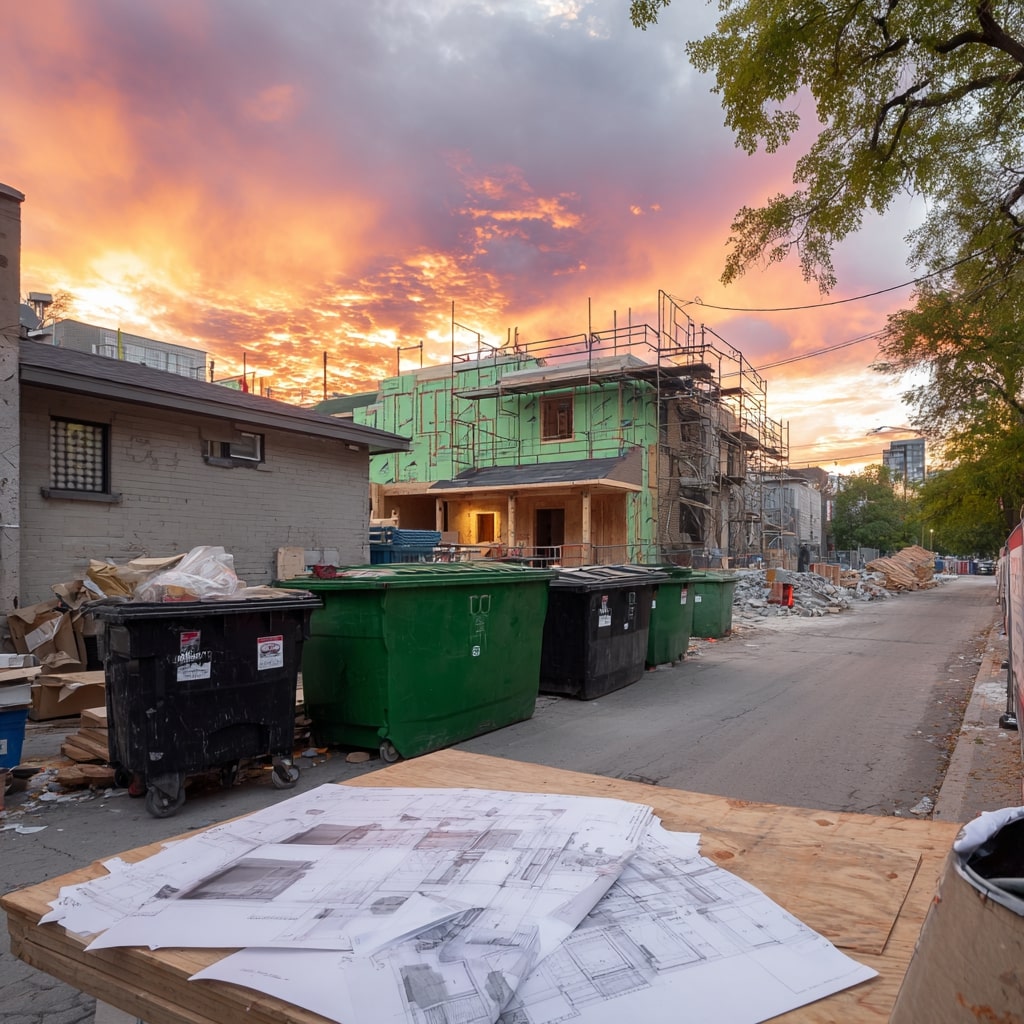- Home
- Articles
- Architectural Portfolio
- Architectral Presentation
- Inspirational Stories
- Architecture News
- Visualization
- BIM Industry
- Facade Design
- Parametric Design
- Career
- Landscape Architecture
- Construction
- Artificial Intelligence
- Sketching
- Design Softwares
- Diagrams
- Writing
- Architectural Tips
- Sustainability
- Courses
- Concept
- Technology
- History & Heritage
- Future of Architecture
- Guides & How-To
- Art & Culture
- Projects
- Interior Design
- Competitions
- Jobs
- Store
- Tools
- More
- Home
- Articles
- Architectural Portfolio
- Architectral Presentation
- Inspirational Stories
- Architecture News
- Visualization
- BIM Industry
- Facade Design
- Parametric Design
- Career
- Landscape Architecture
- Construction
- Artificial Intelligence
- Sketching
- Design Softwares
- Diagrams
- Writing
- Architectural Tips
- Sustainability
- Courses
- Concept
- Technology
- History & Heritage
- Future of Architecture
- Guides & How-To
- Art & Culture
- Projects
- Interior Design
- Competitions
- Jobs
- Store
- Tools
- More
Designing the Perfect Retirement House in the USA: Tips for Comfort and Long-Term Living
Discover how to design the perfect retirement house in the U.S., balancing comfort, functionality, and long-term usability. From accessibility features and energy efficiency to ideal locations and budgeting tips, this guide offers insights to create a tailored, stress-free home that aligns with evolving lifestyles and fosters well-being during retirement.

Planning for retirement is an exciting chapter, and designing the perfect retirement house is a big part of it. It’s not just about creating a comfortable space—it’s about building a home that fits our lifestyle, supports our needs, and allows us to enjoy the years ahead. The right design can make all the difference in how we experience this new phase of life.
In the U.S., retirement homes come in all shapes and sizes, but the key is tailoring the design to our personal preferences and future goals. From convenient layouts to energy-efficient features, every detail matters. Let’s explore how we can create a space that balances functionality, style, and long-term comfort, ensuring our retirement home becomes a place we truly love.

Table of Contents
ToggleUnderstanding Retirement Housing Needs
Creating a retirement home involves understanding specific needs that align with evolving lifestyles and long-term well-being. Each design decision should reflect personal preferences while addressing future challenges.

Assessing Your Lifestyle and Priorities
Lifestyle assessment focuses on daily living habits, hobbies, and interests. Active retirees might prioritize proximity to golf courses, hiking trails, or community centers, while others may prefer quieter suburban or rural settings. Identifying priorities ensures the home fits seamlessly into daily routines.
Space planning matters for various activities. Open layouts are practical for entertaining guests, while dedicated spaces might suit hobbies like painting or woodworking. Compact plans with fewer rooms could appeal for easy maintenance. Recognizing these priorities helps balance functionality and comfort.
Evaluating Future Accessibility Requirements
Planning for accessibility ensures the home adapts as physical needs change. Features like step-free entrances, wider doorways, or reinforced walls for future grab bar installation enhance usability. Homes with single-story plans support aging in place by reducing mobility challenges.
Bathroom and kitchen renovations improve safety. Walk-in showers, non-slip flooring, and adjustable-height counters accommodate diverse mobility levels. Considering these adjustments now minimizes later retrofitting needs, simplifying the transition into advanced years.
Key Design Elements for a Retirement House
Designing a retirement house involves prioritizing features that balance comfort, functionality, and long-term usability. Key elements such as layout, accessibility, and material choices directly impact convenience and lifestyle adaptability.

Single-Story Layouts and Open Floor Plans
Single-story layouts reduce the need for stair usage, improving safety and mobility. Homes without stairs minimize fall risks and ensure all living spaces are easily accessible. Open floor plans create a seamless flow between rooms, maximizing space for mobility aids like wheelchairs or walkers where necessary. Combining kitchen, dining, and living areas fosters connectivity and reduces barriers for daily activities.
Accessibility Features for Aging in Place
Accessibility features make homes adaptable to evolving physical needs. Step-free entrances, wider doorways, and hallways accommodate wheelchairs and walkers. Lever-style door handles and touch-sensitive faucets enhance usability for those with limited hand strength. Bathrooms can include walk-in showers, grab bars, and raised toilet seats to improve safety and comfort. These features enable independent living while supporting future requirements.
Energy-Efficient and Low-Maintenance Materials
Energy-efficient materials lower utility costs, promoting sustainability and affordability. High-performance windows, enhanced insulation, and energy-efficient HVAC systems improve thermal comfort. Solar panels and LED lighting further reduce energy consumption. Choosing low-maintenance materials like vinyl siding, quartz countertops, and ceramic tiles simplifies upkeep, saving time and effort in daily life.
Choosing the Ideal Location in the USA
Selecting the right location is a crucial step in designing a retirement house. The area should align with lifestyle preferences, financial considerations, and long-term well-being.

Factors to Consider: Climate, Taxes, and Community
Location impacts daily comfort and financial security. Climate plays a key role, as warmer regions, like Florida or Arizona, often appeal to retirees seeking mild winters and outdoor activities, while others might prefer cooler climates for personal preference or health reasons. States with tax benefits for retirees, such as no income tax or exemptions on pensions, can significantly reduce expenses; for example, Tennessee and Nevada provide favorable tax policies. Community is equally important—close-knit neighborhoods or retirement-friendly towns foster social interactions and support systems, enhancing quality of life.
Popular Retirement-Friendly States
Certain states are renowned for their retirement benefits. Florida offers warm weather, tax advantages, and numerous 55+ communities. Arizona provides affordable living, excellent healthcare options, and a vibrant active-lifestyle culture suited for retirees. North Carolina combines a moderate climate, lower living costs, and diverse geographical features, including mountains and beaches. Texas is favored for no state income tax, accessible healthcare, and various urban and rural settings. The right state choice depends on personal priorities, from weather preferences to specific amenities.
Budgeting and Financing Your Retirement Home
Efficient budgeting and financing are critical when designing a retirement home in the U.S. Allocating resources wisely ensures a comfortable living space without financial stress. Let’s explore how to estimate costs, work with contractors, and review financing options tailored for retirees.

Estimating Costs and Working with Contractors
Planning expenses accurately simplifies building a retirement home. Major cost factors include land purchase, construction materials, labor, permits, and post-construction finishes. For example, single-story homes with accessibility features may require higher upfront investments due to specialized designs.
Collaborating with experienced contractors minimizes cost overruns. Professional contractors deliver accurate quotes, making it easier to determine realistic budgets. It’s important to verify credentials, seek references, and review previous projects to ensure reliability. Regular communication with contractors throughout the project allows for on-schedule completion while managing unexpected expenses.
Exploring Financing Options for Retirees
Understanding financing solutions helps retirees fund their dream home efficiently. Common options include savings, home equity loans, and retirement accounts. For instance, downsizing from a current residence can free up equity to fund a new property.
Reverse mortgages offer financial flexibility but are viable only for individuals aged 62 or older, and qualification depends on specific property criteria. FHA-insured loans specifically designed for seniors, such as Home Equity Conversion Mortgages (HECM), reduce financial strain, though fees and long-term implications require careful consideration.
State-specific programs and grants may also support retirees building or buying homes in retirement-friendly states, increasing affordability. Consulting with a financial advisor familiar with retirement planning ensures tailored financing strategies aligned with personal resources and long-term goals.
Personalizing Your Space
Designing a retirement house involves creating a space that reflects individuality while addressing comfort and practical needs. Tailored features enhance daily life and support personal enjoyment during retirement.

Creating Functional and Comfortable Living Areas
Functional living areas enhance convenience and promote relaxation. Ergonomic furniture improves posture and comfort for prolonged use. Zoned lighting systems, such as dimmable LEDs, adapt to different tasks like reading or entertaining. Open layouts with flexible seating arrangements improve mobility and seating options for guests.
Temperature control systems with smart thermostats maintain a comfortable environment year-round. Consider incorporating ample natural light with larger windows or skylights, reducing dependence on artificial lighting.
Adding Features for Hobbies and Leisure
Customized spaces for hobbies and leisure encourage fulfillment in retirement. Dedicated craft rooms with organized storage suit activities like quilting or painting. Multi-purpose spaces accommodate various interests, such as a yoga studio that doubles as a meditation zone.
Outdoor patios or gardens with seating areas offer tranquil settings for relaxation or gardening. Technology upgrades, like home theaters or gaming setups, provide entertainment options personalized to individual preferences. A tailored approach ensures the home supports hobbies seamlessly.
Conclusion
Designing the perfect retirement house in the U.S. involves balancing comfort, functionality, and long-term usability. By addressing specific needs, such as accessibility and energy efficiency, we can create spaces that support independence and simplify daily living. Personalizing these spaces ensures they reflect our unique lifestyles and preferences while adapting to future challenges.
Choosing the right location is equally crucial. Factors like climate, community amenities, taxes, and proximity to family play a significant role in deciding where to settle. Whether prioritizing warmer weather in Florida or exploring tax-friendly options in Tennessee, it’s essential to align the location with retirement goals and needs.
Effective budgeting and financing enable us to achieve the desired design without financial strain. From estimating construction costs to exploring tailored financing solutions, such as reverse mortgages or senior-focused loan programs, thoughtful planning ensures resources are used efficiently while accommodating long-term objectives.
Ultimately, creating a retirement home should enhance our well-being, support evolving lifestyles, and provide lasting comfort in this fulfilling phase of life.
- accessible home design USA
- aging in place home design
- comfortable retirement house
- custom retirement homes
- design ideas for retirees
- designing senior homes
- elderly-friendly house design
- energy-efficient retirement homes
- ideal senior home design.
- long-term living home design
- luxury retirement home design
- perfect retirement home USA
- retirement home accessibility
- retirement home comfort tips
- retirement home planning
- Retirement house design
- retirement house tips
- senior living home design
- sustainable retirement homes
- USA retirement housing
Submit your architectural projects
Follow these steps for submission your project. Submission FormLatest Posts
The Chain Reaction Triggered by Foundation Movement
Foundation movement is never an isolated event contained strictly to the concrete...
Why Smart Bin Rental Strategy Shapes Better Architecture Projects
Picture this: you’re standing before your dream architectural project, blueprints approved, permits...
The 10 Most Iconic Buildings in the World and Their Stories
From ancient marvels like the Great Pyramid of Giza to modern icons...
How to Choose the Best Balloon Garland Kit for Your Event Theme
Balloon garlands are now a very popular decoration for today’s celebrations, including...










Leave a comment